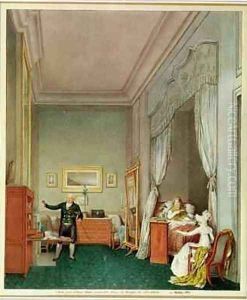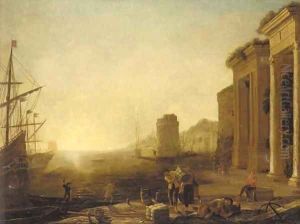Marie-Louise de Hapsburg-Lorraine Paintings
Marie-Louise de Hapsburg-Lorraine, born on December 12, 1791, in Vienna, Austria, was a notable figure in European history, primarily known for her role as the second wife of Napoleon Bonaparte and as the Empress of the French from 1810 to 1814. Born into the influential House of Habsburg-Lorraine, she was the eldest daughter of Emperor Francis II of the Holy Roman Empire and his second wife, Maria Theresa of Naples and Sicily. Her early life was steeped in the complex political and social structures of the Austrian court, where she received an education befitting her status, focusing on languages, arts, and the intricate dance of diplomacy.
Marie-Louise's marriage to Napoleon in 1810 was a political alliance designed to solidify the relationship between France and Austria, two powerful empires that had previously been at odds. Despite the union being a matter of state policy, it produced a son, Napoleon II, who was given the title King of Rome. Marie-Louise's role as Empress of the French saw her navigating the challenging waters of French court life, where she was initially viewed with suspicion by the public but gradually gained respect for her dignity and efforts to fulfill her ceremonial duties.
Following Napoleon's abdication in 1814 and his subsequent exile, Marie-Louise returned to Austria, where she lived under the watchful eye of her father and the Austrian court. She was granted the Duchies of Parma, Piacenza, and Guastalla in 1814, ruling them until her death in 1847. Her governance was marked by a period of cultural and economic growth for the duchies, and she was remembered as a sovereign who was both respected and beloved by her subjects.
Marie-Louise's life was a vivid illustration of the complexities of European political alliances and the role of marriage in diplomatic relations. Her personal resilience in the face of political turmoil and her efforts to navigate her responsibilities as a ruler, mother, and woman of her time leave a lasting legacy. She passed away on December 17, 1847, in Parma, Italy, leaving behind a multifaceted story interwoven with the broader tapestries of Napoleonic and European history.

